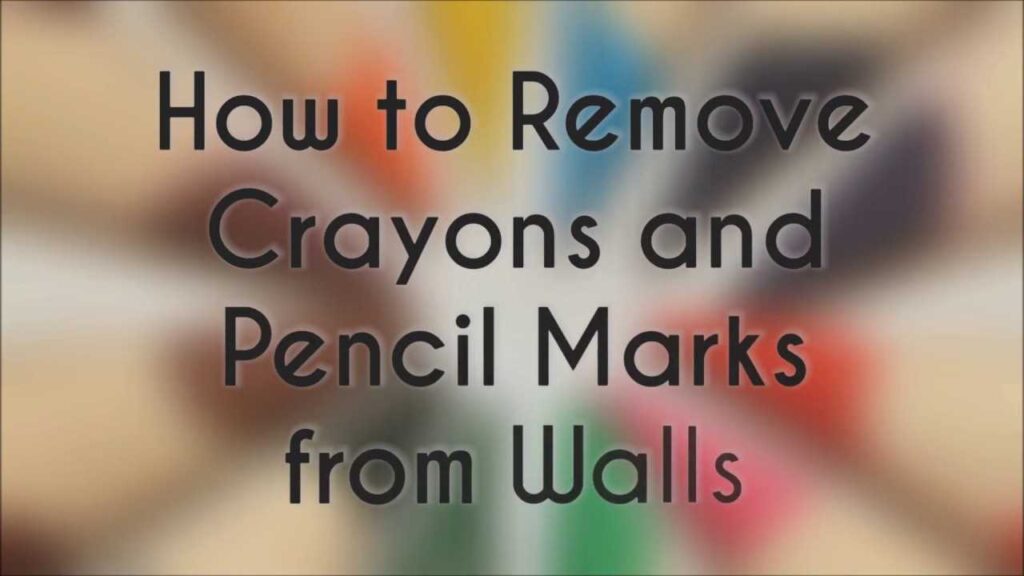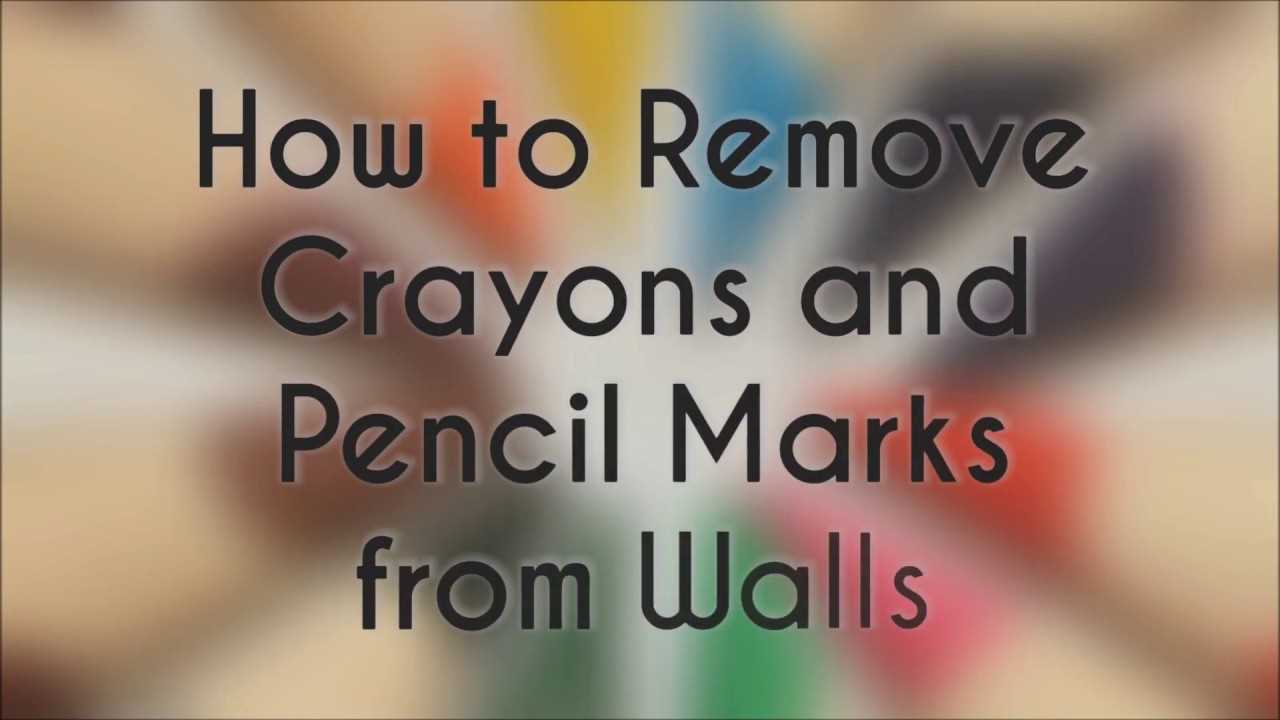
Mastering Crayon Marks Removal: A Comprehensive Guide for Every Surface
Crayon marks. They’re a colorful testament to a child’s creativity, but also a homeowner’s headache. Whether adorning walls, furniture, or even clothing, these waxy remnants can seem stubbornly permanent. Fear not! This comprehensive guide will equip you with the knowledge and techniques for effective crayon marks removal from virtually any surface. We’ll explore various methods, from household staples to specialized cleaning products, ensuring you can restore your surfaces to their pristine condition. Understanding the composition of crayons and the materials they stain is key to successful removal. This guide provides insights and actionable steps to tackle this common household challenge. Say goodbye to unwanted crayon art and hello to a clean, vibrant home.
Understanding the Enemy: Crayon Composition and Surface Interactions
Before diving into cleaning methods, it’s essential to understand what makes crayon marks so persistent. Crayons are primarily composed of paraffin wax and pigment. The wax acts as a binder, holding the pigment together and allowing it to adhere to surfaces. The pigments determine the color of the crayon, and some pigments are more likely to stain than others. The porosity of the surface plays a significant role in how easily crayon marks can be removed. Porous surfaces like painted walls and fabric tend to absorb the wax and pigment, making removal more challenging.
The Arsenal: Essential Tools and Cleaning Solutions
A well-stocked cleaning arsenal is crucial for effective crayon marks removal. Here’s a list of essential tools and cleaning solutions you should have on hand:
- Soft cloths or microfiber towels: For gentle wiping and buffing.
- Sponges: For applying cleaning solutions and scrubbing.
- Soft-bristled brushes: For loosening crayon marks on textured surfaces.
- Hair dryer: To soften the wax for easier removal.
- Iron: To melt and absorb crayon marks from fabric.
- Baking soda: A mild abrasive for scrubbing.
- White vinegar: A natural cleaning agent for dissolving wax.
- Dish soap: For general cleaning and degreasing.
- Rubbing alcohol: A solvent for dissolving wax and pigment.
- Commercial crayon removers: Specially formulated for crayon marks removal.
Crayon Marks Removal from Walls: A Step-by-Step Guide
Walls are a frequent canvas for budding artists. Here’s how to tackle crayon marks on painted walls:
- Test in an inconspicuous area: Before applying any cleaning solution, test it on a small, hidden area to ensure it doesn’t damage the paint.
- Warm the crayon marks: Use a hair dryer on a low setting to gently warm the crayon wax. This will soften it and make it easier to remove.
- Choose your cleaning method: Several methods can effectively remove crayon marks from walls:
- Baking soda paste: Mix baking soda with a small amount of water to form a paste. Apply the paste to the crayon marks and gently scrub with a soft cloth. Wipe away the residue with a damp cloth.
- Magic Eraser: These melamine sponges are surprisingly effective at removing crayon marks. Dampen the sponge and gently rub the crayon marks. Be careful not to scrub too hard, as this can damage the paint.
- Dish soap solution: Mix a few drops of dish soap with warm water. Dip a soft cloth into the solution and gently wipe the crayon marks. Rinse with a clean, damp cloth.
- Commercial crayon remover: Follow the instructions on the product label.
- Rinse and dry: After removing the crayon marks, rinse the area with a clean, damp cloth and dry with a soft towel.
Removing Crayon Marks from Furniture: Wood, Upholstery, and More
Crayon marks can also find their way onto furniture. Here’s how to tackle them on different types of furniture:
Wood Furniture
For wooden furniture, start with the gentlest method first. Try wiping the crayon marks with a damp cloth. If that doesn’t work, try using a baking soda paste or a dish soap solution. For stubborn marks, you can try using a small amount of rubbing alcohol, but be careful not to damage the finish. Always test in an inconspicuous area first. Consider using a specialized wood cleaner after crayon marks removal to restore the wood’s natural shine. [See also: Best Wood Furniture Cleaners]
Upholstered Furniture
Removing crayon marks from upholstery can be tricky. Start by vacuuming the area to remove any loose crayon particles. Then, try blotting the marks with a clean cloth dampened with a dish soap solution. If that doesn’t work, you can try using a commercial upholstery cleaner. Always test in an inconspicuous area first. For particularly stubborn marks, you may need to consult a professional upholstery cleaner. Ensure the fabric is thoroughly dried after cleaning to prevent mold or mildew growth.
Leather Furniture
Leather furniture requires special care. Start by wiping the crayon marks with a soft, dry cloth. If that doesn’t work, try using a leather cleaner specifically designed for crayon marks removal. Follow the instructions on the product label carefully. Avoid using harsh chemicals or abrasive cleaners, as they can damage the leather. After cleaning, apply a leather conditioner to help restore the leather’s moisture and suppleness. Regular conditioning can also help prevent future staining.
Tackling Crayon Marks on Clothing and Fabrics
Discovering crayon marks on clothing can be disheartening, but don’t despair! Here’s how to remove them:
- Scrape off excess crayon: Use a dull knife or edge of a credit card to gently scrape off any excess crayon wax.
- Pre-treat the stain: Apply a stain remover specifically designed for wax or grease stains. Let it sit for the recommended time.
- Iron the stain: Place the stained fabric face down on a clean paper towel. Iron the back of the fabric on a low setting. The heat will melt the wax and transfer it to the paper towel. Repeat with fresh paper towels until no more wax is transferred.
- Launder as usual: Wash the garment in warm water with your regular detergent. Check the stain before drying. If the stain is still visible, repeat the process.
Preventing Future Crayon Disasters: Tips and Strategies
Prevention is always better than cure. Here are some tips to prevent future crayon marks:
- Designate a coloring area: Create a specific area for coloring, such as a table covered with a washable tablecloth.
- Supervise children while they are coloring: This will help prevent them from drawing on walls or furniture.
- Use washable crayons: These crayons are specially formulated to be easily removed from surfaces.
- Protect your walls: Consider using washable paint or applying a clear, washable coating to your walls.
- Store crayons properly: Keep crayons out of reach of young children when they are not being used.
The Science Behind Crayon Marks Removal
Successful crayon marks removal hinges on understanding the scientific principles at play. Wax, the primary component of crayons, is a non-polar substance, meaning it doesn’t readily dissolve in polar solvents like water. This is why water alone is often ineffective in removing crayon marks. Solvents like rubbing alcohol and commercial crayon removers are effective because they are non-polar and can dissolve the wax. Heat, such as from a hair dryer or iron, softens the wax, making it easier to lift from the surface. Abrasives like baking soda work by gently scrubbing away the wax particles. Understanding these principles allows you to choose the most appropriate cleaning method for the specific surface and type of crayon marks.
DIY Crayon Marks Removal Solutions: Recipes and Techniques
For those who prefer natural cleaning solutions, several DIY options are effective for crayon marks removal:
- Vinegar and Baking Soda: This classic combination is a powerful cleaning duo. The acidity of the vinegar helps to dissolve the wax, while the baking soda provides a mild abrasive action.
- Lemon Juice: The citric acid in lemon juice can also help to dissolve wax and lift stains. Apply lemon juice to the crayon marks, let it sit for a few minutes, and then wipe away with a damp cloth.
- Olive Oil: Surprisingly, olive oil can also be effective in removing crayon marks. Apply a small amount of olive oil to the crayon marks, let it sit for a few minutes, and then wipe away with a clean cloth. The oil helps to loosen the wax and make it easier to remove.
When to Call a Professional for Crayon Marks Removal
While many crayon marks removal methods can be effective, there are times when it’s best to call in a professional. If you’ve tried several methods and the crayon marks are still visible, or if you’re concerned about damaging the surface, it’s best to consult a professional cleaner. Professionals have the experience and equipment to safely and effectively remove crayon marks from even the most delicate surfaces. They can also provide advice on how to prevent future crayon marks. For example, if dealing with antique furniture or delicate fabrics, professional intervention is highly recommended to avoid irreversible damage.
The Psychology of Crayon Marks: Embracing Creativity While Maintaining Cleanliness
Crayon marks, while often viewed as a cleaning challenge, are also a symbol of childhood creativity and exploration. Finding a balance between encouraging artistic expression and maintaining a clean and tidy home is key. By providing children with designated coloring areas, washable crayons, and clear guidelines, you can foster their creativity without sacrificing the cleanliness of your home. Remember, crayon marks removal is a part of life, but with the right knowledge and techniques, it doesn’t have to be a source of stress.
Advanced Techniques for Stubborn Crayon Marks
Some crayon marks are more stubborn than others, requiring more advanced techniques. For example, using a steam cleaner can be effective in lifting wax from porous surfaces. The steam helps to loosen the wax, making it easier to wipe away. Another technique is to use a specialized solvent designed for removing wax and grease. These solvents are typically more powerful than household cleaners and should be used with caution. Always follow the instructions on the product label and test in an inconspicuous area first. In some cases, repainting or refinishing the surface may be the only option for completely removing stubborn crayon marks.
The Future of Crayon Marks Removal: Innovations and Trends
The world of cleaning is constantly evolving, and new innovations are emerging all the time. One trend is the development of more environmentally friendly cleaning products that are effective at removing crayon marks without harsh chemicals. Another trend is the use of nanotechnology to create surfaces that are resistant to staining. These surfaces are designed to repel wax and other substances, making it easier to clean up messes. As technology advances, we can expect to see even more innovative solutions for crayon marks removal in the future.
Conclusion: Reclaiming Your Surfaces from Crayon Chaos
Crayon marks removal doesn’t have to be a daunting task. By understanding the composition of crayons, the nature of the stained surface, and utilizing the appropriate cleaning methods, you can effectively restore your surfaces to their original glory. Remember to always test cleaning solutions in an inconspicuous area first, and to be patient and persistent. With a little effort and the right tools, you can conquer crayon chaos and maintain a clean and vibrant home. So, embrace the creativity, cherish the memories, and confidently tackle those crayon marks with the knowledge you’ve gained. [See also: Eco-Friendly Cleaning Solutions]

